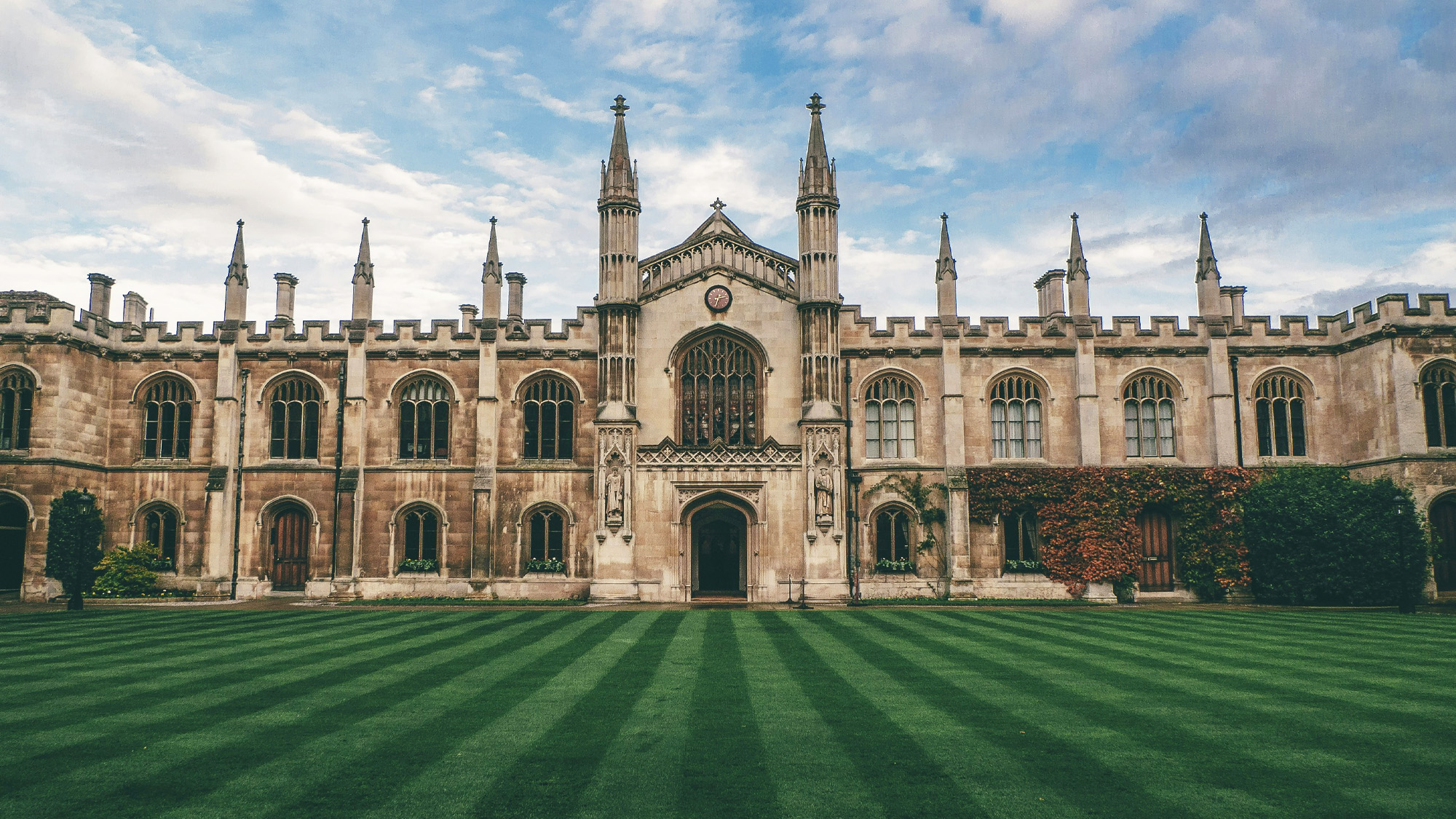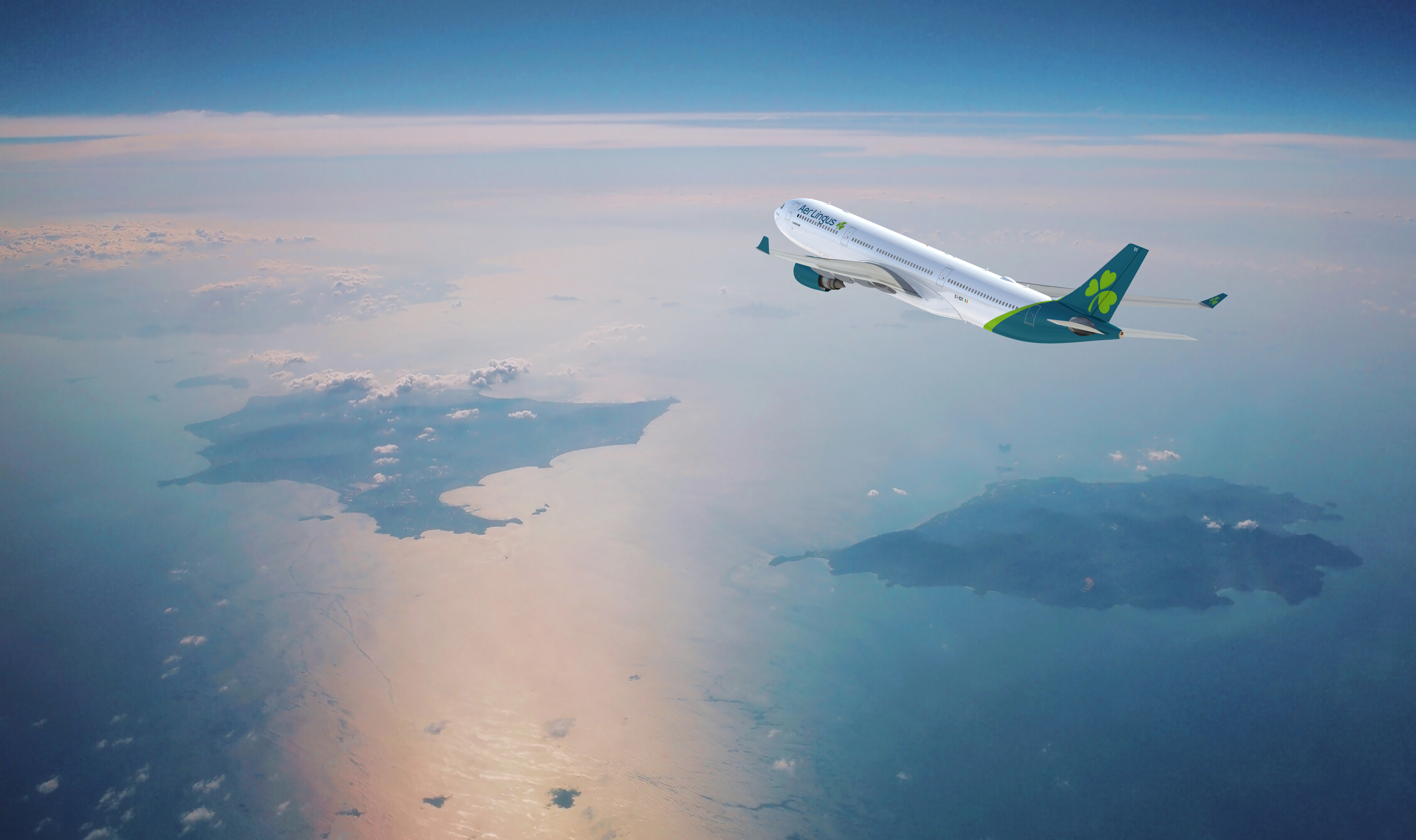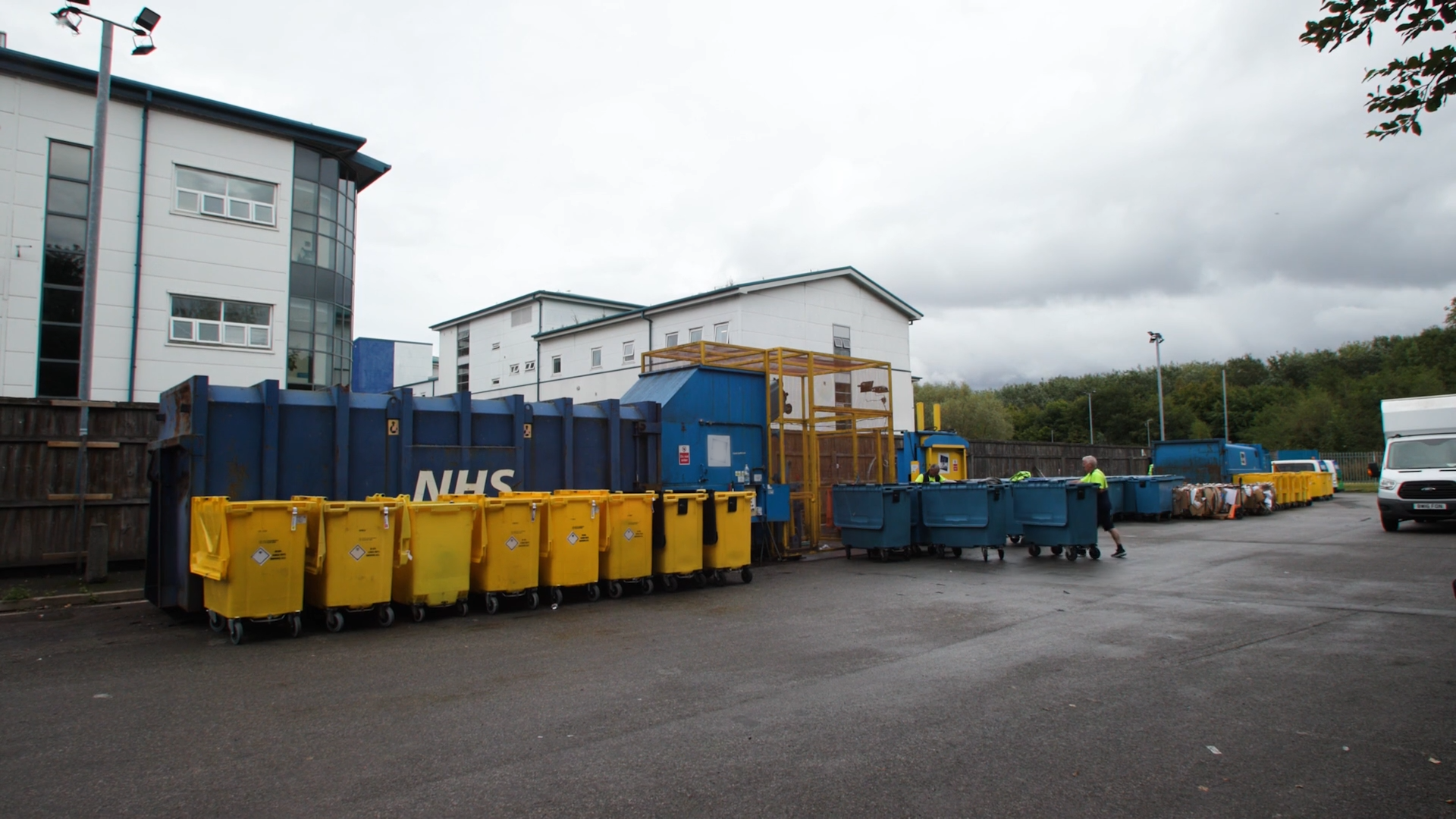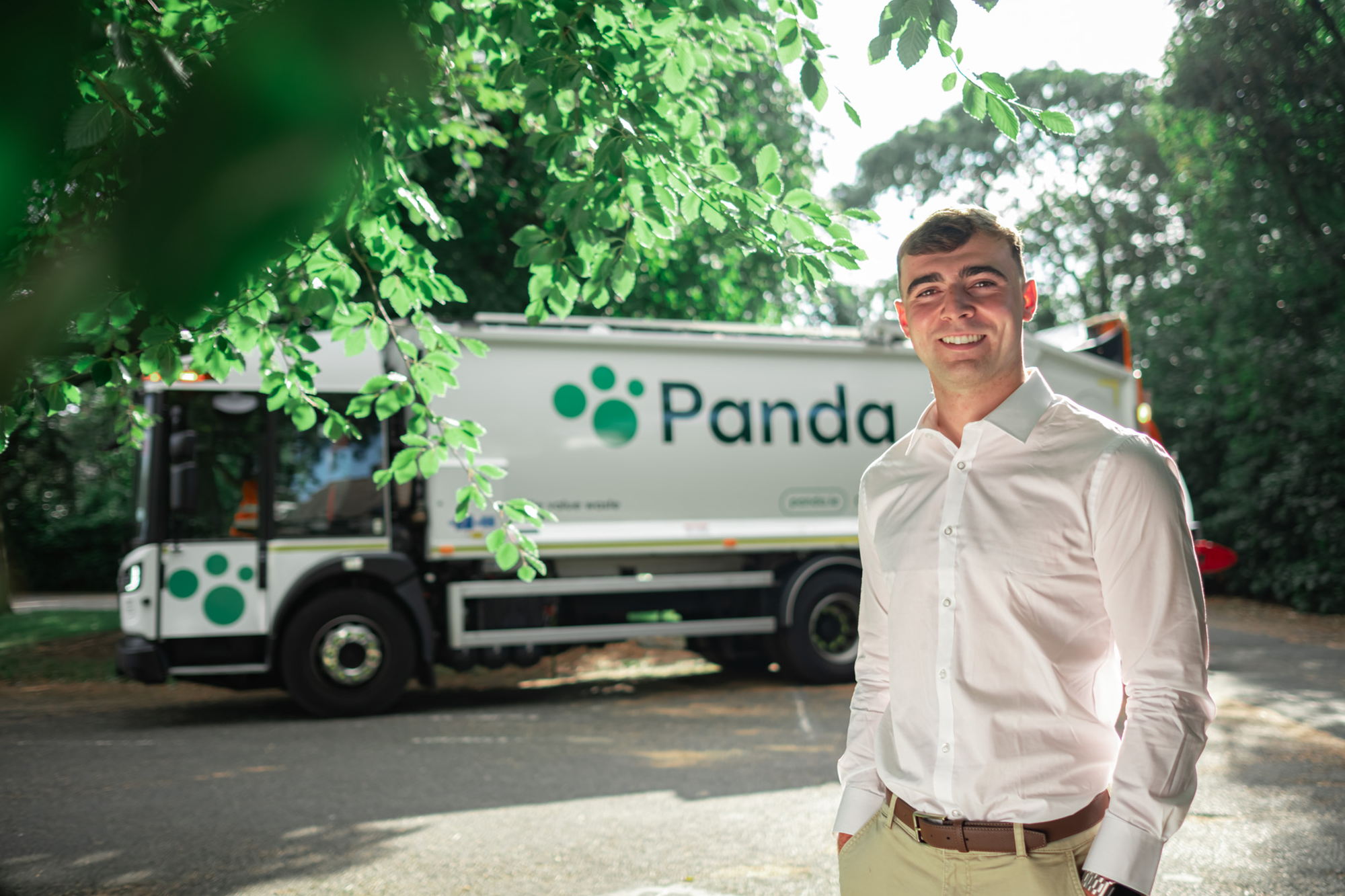A business waste management solution built around value
As a supplier that values innovation, we proposed a solution to the University that would result in removing general waste as a concept from the campus, and focus instead on valuing waste. A simple but highly-effective two-bin collection methodology captures materials for either recycling or resource recovery, and for energy recovery via anaerobic digestion.
All materials, except for food and liquids, are collected in a single container, with the segregation, recycling, and recovery of resource being facilitated at our processing facility. Our proven recycling technologies let us provide services at scale that deliver simplicity for client and end user alike.
The reality is that much of what was previously going into the ‘general waste’ was recyclable. The solid materials (big bin) are now taken to a bulking station locally, then taken to our state-of-the-art Material Recovery Facility (MRF) for processing. This is where over 80% of inputs can be fully recycled. The food and heavily soiled food packaging (little bin) is taken to a local Anaerobic Digestion plant for energy generation.
We have the technology to provide services at the scale that delivers simplicity
The multiple technologies we employed are each market-leading, but how we layer and combine their applications delivers outstanding capabilities and enables the university to deliver a step change in their approach to resource recovery and recycling-led waste management.
We are utilising our processing capabilities to generate recovered materials that we actively speciate to feed in to the circular economy, securing a low carbon footprint in returning resource back to a product.
Examples of this in practice:
- Higher quality films are returned to product grade plastic pellets.
- Films unsuitable for this are processed to manufacture sustainable aviation fuels.
- Our tubs, pots and trays are currently recovered and recycled in the true sense and returned to product use as drainage pipes.
- Our clear plastics are recovered, recycled, and processed within the same county and returned to use as product in the form of drinks bottles.
- Our paper and card are returned to fibre via the mills that we supply.
- A proportion of our glass is recycled back to original product, with the remainder returned to use as product - as water filtration media or as a recovered aggregate.
Long-term confidence for sustainability and contract security
The residues from our processing plants, although a minority stream, are manufactured to Solid Recovered Fuel (SRF). This is not just energy from waste, but involves making a product that offset
coal usage tonne for tonne in energy generation. This therefore offsets carbon in the physical sense, although not permitted as a technical offset for carbon reporting purposes.
All waste residues produced as a result of this contract (material which cannot be recovered to recycling through this process), will be manufactured to high-grade SRF of higher biogenic content, thus attracting a lower threshold of carbon tax when it is applied in the future.
The SRF will be sent to a cement manufacturer in the Peak District and there are no residues from this process that go to landfill. In fact, the ash/clinker from this process is further recycled into cement or aggregate in their concrete products.
This provides greater long-term sustainability and security, both in terms of global security concerns and the full lifespan of the contract. We are aware that energy from waste plants is utilised by our competitors, to which they deliver RDF fuels. This, however, is an inferior solution that’s positioned lower in the waste hierarchy, and does not encourage further innovation to secure ever increasing levels of recycling for the University.
Delivering carbon-efficient services
With aligned goals between Panda and the University on reaching net zero (through physical change, not offsetting) within the same timescale of 2040, many elements of the service delivery model
focus and contribute towards achieving our joint net zero objectives.
- Service delivered by electric zero tail pipe emission refuse collection vehicle.
- Site service schedule optimised to reduce miles and fuel usage.
- Circular solutions for recyclables.
- Local outlets for treatment and recycling vs export.
- All electricity purchased by Panda is from 100% renewable sources.







